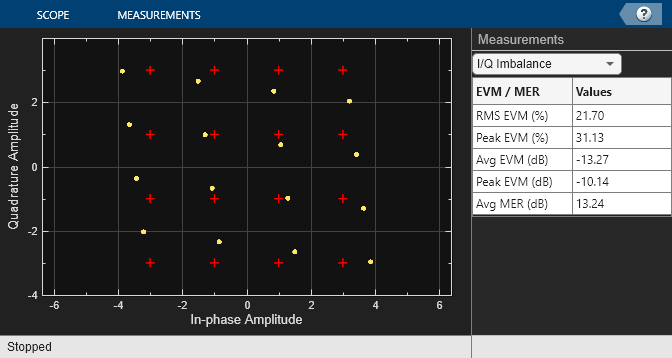MER Measurement
Measure modulation error ratio in digital modulation applications
Libraries:
Communications Toolbox /
Utility Blocks
Description
The MER Measurement block computes a form of signal-to-noise ratio (SNR) measurement that you can use to assess the ability of a receiver to accurately demodulate a signal. Specifically, it returns the modulation error ratio (MER), minimum MER, and percentile MER for a received signal. You use the MER measurements to determine system performance in communications applications. For example, to determine compliance with applicable DVB-T system radio transmission standards conformance testing requires accurate MER measurements.
This icon shows the block with all ports enabled.![]()
Examples
Ports
Input
Output
Parameters
Block Characteristics
Data Types |
|
Multidimensional Signals |
|
Variable-Size Signals |
|
Algorithms
MER is a measure of the SNR in a modulated signal calculated in dB. The MER over a burst containing N symbols is
where:
ek = .
Ik represents the in-phase component of the kth symbol in the burst.
Qk represents the quadrature phase component of the kth symbol in the burst.
Ik and Qk represent ideal reference values.
and represent received symbols.
N represents the number of symbols in the burst.
The MER for the kth symbol is
The minimum MER represents the minimum MER value in a burst, or
The algorithm computes the X-percentile MER by creating a histogram of all the incoming MERk values. The output provides the MER value above which X% of the MER values fall.
References
[1] ESTI TR 101 290. "Digital Video Broadcasting (DVB): Measurement guidelines for DVB systems." June 2020.
Extended Capabilities
Version History
Introduced in R2009b


